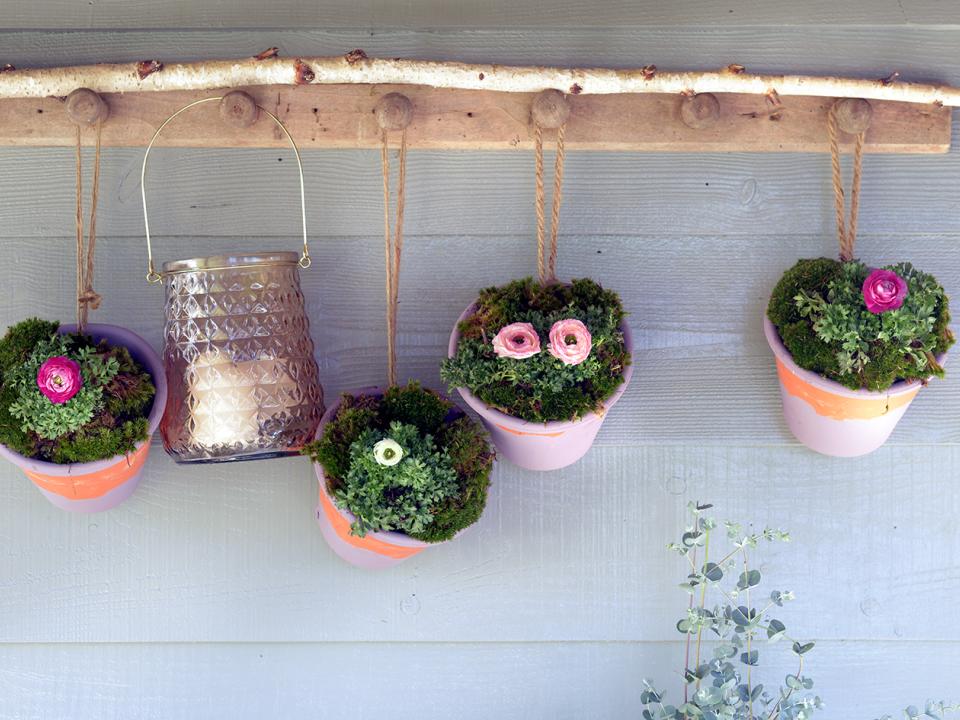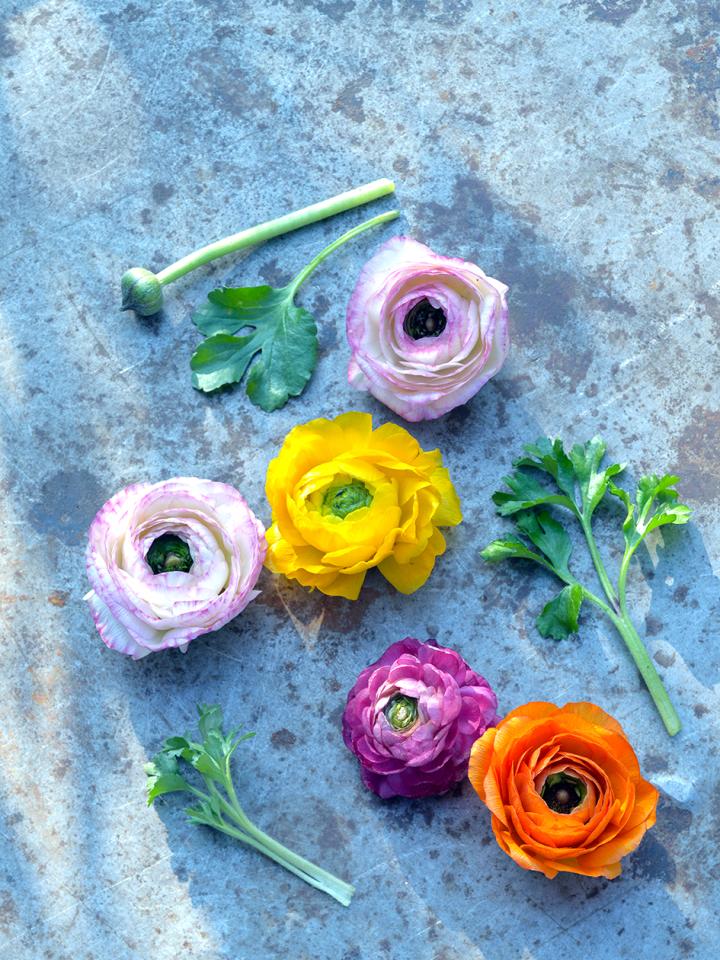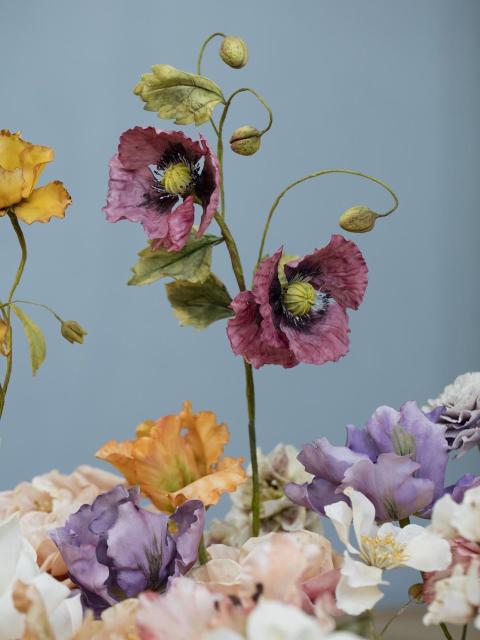Radiant open flowers in red, pink, orange, yellow, white, blue and purple: that’s Ranunculus. Single, semi-double, double, with ruches, aspiring to be a rose or a peony: they come in all imaginable shapes but they all look like they’ve come straight from a flower meadow. The plant grows out of gnarled tubers that are also called claws. Pot Ranunculuses flower from the start of March to the end of April. Even when they’ve finished flowering they still look good because the fuzzy black heart keeps growing for a while.
Swamp princess named after a frog
Ranunculus is a family of plants with some 2000 species, most of which occur in temperate climate zones in the northern hemisphere. The name is derived from the Latin word 'rana', which means frog. It refers to the place where the plant is found in the wild: Ranunculus thrives in boggy, swampy places. The plant does well in damp borders and beds and has the greatest impact in small groups. It’s best to use low-growing Ranunculuses for planters and containers, since that best shows off the many layers of petals.

Ranunculus trivia
- Ranunculus symbolises charm. In the Victorian language of flowers giving someone ranunculuses was a way of saying: 'I am dazzled by your charms’.
- It’s also known as ‘buttercup’ all over the world: Persian, Dutch, French and Scottish buttercups are all Ranunculuses (and members of the same family of plants).
- The flower plays a key role in a well-known Iranian tale about a shy prince who didn’t dare to declare his love to an attractive nymph. He died of a broken heart and changed into a Ranunculus that keeps his secret hidden in its petals.






